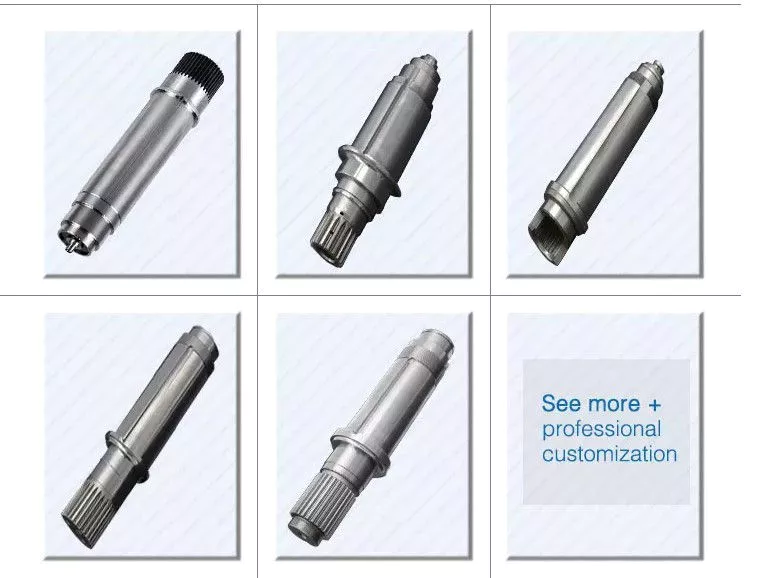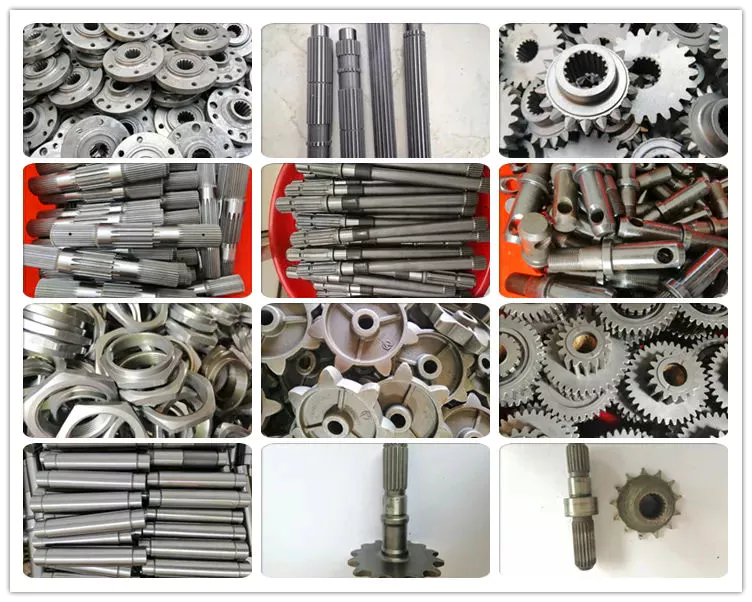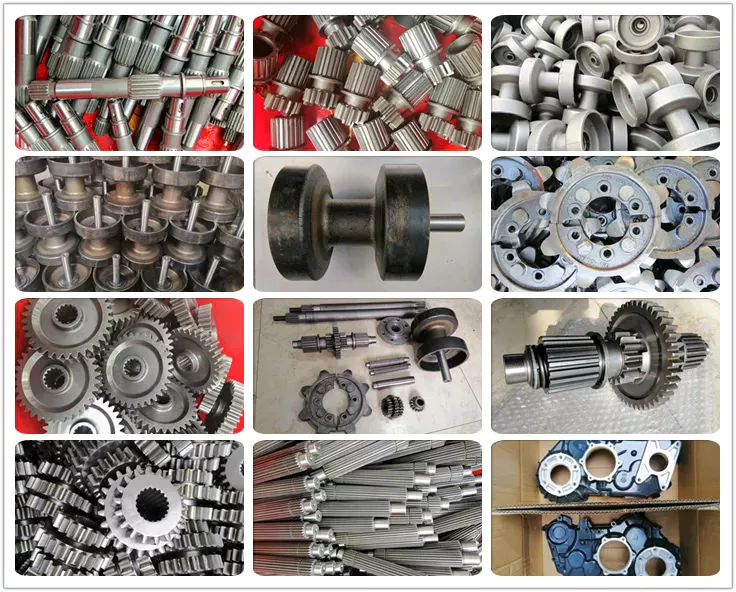Product Description
BMS 2000 / 2K Series Geroler Hydraulic Motor For Crane / Drilling Machines
Hanjiu BMS= OMS=Eaton 2000 series=M+S MS
BMS hydraulic motor is 1 type of high torque Iow speed hydraulic motors, with high efficiency and long life. BM motor has a wide Speed range, high starting torque and rotating stable at high speed Compact and light, it can be connected to working machine directly, adapted to all kinds of Iow speed heavy load facilities.
Description:
BMS hydraulic motors can well replace OMS series motors from and 2K series motors from EATON.
The Options of BMS-OMS 2K series hydraulic motors:
– Model – Disc valve, roll-gerotor;
– Flange and wheel mount;
– Shafts – straight, splined and tapered;
– Metric/UNC and BSPP ports;
-Side and rear ports
– Color-Blue, grey ,black ,yellow ;
Features:
1. Advanced design in disc distribution flow, which can provide improved performance at low speed.
2. The output shaft adapts in tapered roller bearings that permit high axial and radial forces. Can offer capacities of high pressure and high torque in the wide of applications.
3. Double-rolling bearing design, which permit higher radial loads.
4. Avariety of connection types of flange, output shaft and oil port.
Applications:
BMS hydraulic motors are widely applied in agriculture machinery, fishing machinery, plastic industry, mining, and construction machinery.
1. Agricultural: all combine harvesters, seeders, rotary tiller, mower, sprayer, feed mixers, ground drilling machine.
2. fishing with: hauling machine.
3. lndustry: winding machines, textile machines, printing presses, operating with a washing machine.
4. construction industry: rollers, cement mixers, cleaning cars.
Product features:
* Continuous pressure :Max. value of operating motor continuously. |
||||||||||||||||||||||||||||||||||||||||||||||||||||||||||||||||||||||||||||||||||||||||||||||||||||||||||||||||||||||||||||||||||||||||||||||||||||||||||||||||||
Model Crossing:
| HXIHU (WEST LAKE) DIS.U HYDRAULIC |
M+S HYDRAULIC |
EATON CHAR LYNN |
ROSS TRW |
WHITE CROSS |
PARKER | SAM BREVINI |
BOSCH RECROTH |
|
| BMM | MM MLHK | J SERIES | OMM | BGM | MGX | |||
| BMP/BM1 | MP HP | H SERIES | OMP DH | MF MG | WP RS | TC TE TB | BG | MGP GXP |
| BMR/BM2 | MR HR MLHRW,RW | S,T SERIES W SERIES | OMR DS OMEW | MB | WR RE | TF | BR | MGR GMR |
| BMH/BM4 | MH MLHH HW HWF | OMH | ME | RE | TG | |||
| BMS/BM5 | MS MSY MLHS | 2000 SERIES | OMS | ME | RE | TG | HPR | MGS GMS |
| BMT/BM6 | MT MLHT MTM | 6000 SERIES | OMT TMT | MJ | HT | MGT,GMT | ||
| BMV | MV MLHV | 10000 SERIES | OMV | MGV GMV |
What benefit can i get?
If you are doing hydrualic business, you ae distributing hydraulic components, you can take this motor, add this motor into your catagories, this motor will help you to enlarge your market, If you sell $1,000,000.00 a year, you raise profit by at least 30%, that is $300,000.00.
- Hanjiu BMS-160-F6-F-S = CZPT Char lynn 2k series, from USA
- Hanjiu BMS-160-F6-F-S = OMS series, from Danmark
- Hanjiu BMS-160-F6-F-S = M+S MS series, from Bulgaria
- we have strong ability to match OEM part no. and provide you.
APPLICATIONS:
|
|
|
|
|
|
|
|
|
|
|
|
How to work with US
- discuss your demand with us first
- we help you to confirm the products
- match with our models
- discuss your demand quantity with us, this will help us to provide you our best offer
- we make a deal on the offer
- sign a contract
- you pay deposit
- we produce
- you pay balance payment after order ready for shipping
- dispatch order
- Payment terms: 30% deposit, 70% balance should be paid before shipping
- Shipping: by sea, by air, by train
- Terms: FOB, CFR, CIF
- Loading port: ZheJiang , HangZhou, ZheJiang , HangZhou, China
Our company:
Elephant Fluid Power has been engaged in the hydraulic business since the beginning of the 20th century. It has a history of nearly 20 years and has always been upholding the principles of “quality first”, “credit first” and “zero complaint”, and has become a new leader in the hydraulics industry. CZPT Fluid Power insists on good products, good service, and has been providing customers with better, more comprehensive hydraulic products, and constantly.
We are looking for good long business partner and friendship.
If you are interested in our products, please contact me, I will provide the best price support and quality service.
I believe we will establish a good and long-term cooperation.
The Different Types of Splines in a Splined Shaft
A splined shaft is a machine component with internal and external splines. The splines are formed in 4 different ways: Involute, Parallel, Serrated, and Ball. You can learn more about each type of spline in this article. When choosing a splined shaft, be sure to choose the right 1 for your application. Read on to learn about the different types of splines and how they affect the shaft’s performance.
Involute splines
Involute splines in a splined shaft are used to secure and extend mechanical assemblies. They are smooth, inwardly curving grooves that resist separation during operation. A shaft with involute splines is often longer than the shaft itself. This feature allows for more axial movement. This is beneficial for many applications, especially in a gearbox.
The involute spline is a shaped spline, similar to a parallel spline. It is angled and consists of teeth that create a spiral pattern that enables linear and rotatory motion. It is distinguished from other splines by the serrations on its flanks. It also has a flat top. It is a good option for couplers and other applications where angular movement is necessary.
Involute splines are also called involute teeth because of their shape. They are flat on the top and curved on the sides. These teeth can be either internal or external. As a result, involute splines provide greater surface contact, which helps reduce stress and fatigue. Regardless of the shape, involute splines are generally easy to machine and fit.
Involute splines are a type of splines that are used in splined shafts. These splines have different names, depending on their diameters. An example set of designations is for a 32-tooth male spline, a 2,500-tooth module, and a 30 degree pressure angle. An example of a female spline, a fillet root spline, is used to describe the diameter of the splined shaft.
The effective tooth thickness of splines is dependent on the number of keyways and the type of spline. Involute splines in splined shafts should be designed to engage 25 to 50 percent of the spline teeth during the coupling. Involute splines should be able to withstand the load without cracking.
Parallel splines
Parallel splines are formed on a splined shaft by putting 1 or more teeth into another. The male spline is positioned at the center of the female spline. The teeth of the male spline are also parallel to the shaft axis, but a common misalignment causes the splines to roll and tilt. This is common in many industrial applications, and there are a number of ways to improve the performance of splines.
Typically, parallel splines are used to reduce friction in a rotating part. The splines on a splined shaft are narrower on the end face than the interior, which makes them more prone to wear. This type of spline is used in a variety of industries, such as machinery, and it also allows for greater efficiency when transmitting torque.
Involute splines on a splined shaft are the most common. They have equally spaced teeth, and are therefore less likely to crack due to fatigue. They also tend to be easy to cut and fit. However, they are not the best type of spline. It is important to understand the difference between parallel and involute splines before deciding on which spline to use.
The difference between splined and involute splines is the size of the grooves. Involute splines are generally larger than parallel splines. These types of splines provide more torque to the gear teeth and reduce stress during operation. They are also more durable and have a longer life span. And because they are used on farm machinery, they are essential in this type of application.
Serrated splines
A Serrated Splined Shaft has several advantages. This type of shaft is highly adjustable. Its large number of teeth allows large torques, and its shorter tooth width allows for greater adjustment. These features make this type of shaft an ideal choice for applications where accuracy is critical. Listed below are some of the benefits of this type of shaft. These benefits are just a few of the advantages. Learn more about this type of shaft.
The process of hobbing is inexpensive and highly accurate. It is useful for external spline shafts, but is not suitable for internal splines. This type of process forms synchronized shapes on the shaft, reducing the manufacturing cycle and stabilizing the relative phase between spline and thread. It uses a grinding wheel to shape the shaft. CZPT Manufacturing has a large inventory of Serrated Splined Shafts.
The teeth of a Serrated Splined Shaft are designed to engage with the hub over the entire circumference of the shaft. The teeth of the shaft are spaced uniformly around the spline, creating a multiple-tooth point of contact over the entire length of the shaft. The results of these analyses are usually satisfactory. But there are some limitations. To begin with, the splines of the Serrated Splined Shaft should be chosen carefully. If the application requires large-scale analysis, it may be necessary to modify the design.
The splines of the Serrated Splined Shaft are also used for other purposes. They can be used to transmit torque to another device. They also act as an anti-rotational device and function as a linear guide. Both the design and the type of splines determine the function of the Splined Shaft. In the automobile industry, they are used in vehicles, aerospace, earth-moving machinery, and many other industries.
Ball splines
The invention relates to a ball-spinned shaft. The shaft comprises a plurality of balls that are arranged in a series and are operatively coupled to a load path section. The balls are capable of rolling endlessly along the path. This invention also relates to a ball bearing. Here, a ball bearing is 1 of the many types of gears. The following discussion describes the features of a ball bearing.
A ball-splined shaft assembly comprises a shaft with at least 1 ball-spline groove and a plurality of circumferential step grooves. The shaft is held in a first holding means that extends longitudinally and is rotatably held by a second holding means. Both the shaft and the first holding means are driven relative to 1 another by a first driving means. It is possible to manufacture a ball-splined shaft in a variety of ways.
A ball-splined shaft features a nut with recirculating balls. The ball-splined nut rides in these grooves to provide linear motion while preventing rotation. A splined shaft with a nut that has recirculating balls can also provide rotary motion. A ball splined shaft also has higher load capacities than a ball bushing. For these reasons, ball splines are an excellent choice for many applications.
In this invention, a pair of ball-spinned shafts are housed in a box under a carrier device 40. Each of the 2 shafts extends along a longitudinal line of arm 50. One end of each shaft is supported rotatably by a slide block 56. The slide block also has a support arm 58 that supports the center arm 50 in a cantilever fashion.
Sector no-go gage
A no-go gauge is a tool that checks the splined shaft for oversize. It is an effective way to determine the oversize condition of a splined shaft without removing the shaft. It measures external splines and serrations. The no-go gage is available in sizes ranging from 19mm to 130mm with a 25mm profile length.
The sector no-go gage has 2 groups of diametrally opposed teeth. The space between them is manufactured to a maximum space width and the tooth thickness must be within a predetermined tolerance. This gage would be out of tolerance if the splines were measured with a pin. The dimensions of this splined shaft can be found in the respective ANSI or DIN standards.
The go-no-go gage is useful for final inspection of thread pitch diameter. It is also useful for splined shafts and threaded nuts. The thread of a screw must match the contour of the go-no-go gage head to avoid a no-go condition. There is no substitute for a quality machine. It is an essential tool for any splined shaft and fastener manufacturer.
The NO-GO gage can detect changes in tooth thickness. It can be calibrated under ISO17025 standards and has many advantages over a non-go gage. It also gives a visual reference of the thickness of a splined shaft. When the teeth match, the shaft is considered ready for installation. It is a critical process. In some cases, it is impossible to determine the precise length of the shaft spline.
The 45-degree pressure angle is most commonly used for axles and torque-delivering members. This pressure angle is the most economical in terms of tool life, but the splines will not roll neatly like a 30 degree angle. The 45-degree spline is more likely to fall off larger than the other two. Oftentimes, it will also have a crowned look. The 37.5 degree pressure angle is a compromise between the other 2 pressure angles. It is often used when the splined shaft material is harder than usual.

